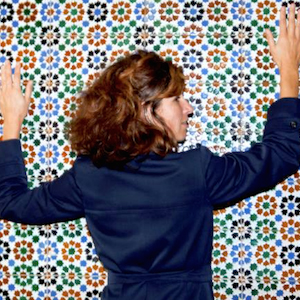‘I’ve always been interested in strange things people do. Like stuffing dead animals, which in our time is considered to be rather creepy, but which was a common practice in Europe during the 18 th and 19 th century,’ Portuguese photographer Mariana Lopes says of her Limbo series: pictures taken in nature with parts of stuffed dead animals.
‘The taxidermy guy I worked with sees it as a craft just like ceramics or woodworking.’ It’s slightly more controversial because he’s commissioned by hunters, who go to Africa to kill wild animals for fun, and want a taxidermy trophy to show off with. ‘The system behind it is even more perverse: hunters pay fortunes to shoot these wild animals, and by doing so they actually maintain the species they want to hunt. Thus the entire process is made legal.’


Lopes questions this perverse reality, and beyond. ‘With this series I created something for people to think about, much broader than the fate of wild animals being hunted for their skin. Why do we kill animals anyway? We don’t need their meat in order to survive or to live well… I question both killing animals for fun and for food,’ says the photographer. Lopes meticulously constructs each picture.
‘I am always very aware of the lines and the framing. Everything has to be balanced.’ Also in terms of subjects, she likes to stage things: to build a concept. The fact she’s also a trained architect is not lost on her current career. ‘Studying architecture gave me interesting tools to apply in photography. Besides, it’s a different approach to reality. In architecture you learn how to build space; in photography, you learn how to see space,’ says Lopes.


Her artistic plan for the coming years is to live on several islands for a while and to construct a photographic oeuvre with a series of photographs shot on these various locations. From Faial in the Azores, where she was based during the past year and where she finished three series, she will soon move to Tenerife, one of the Canary Islands. ‘Living on an island has an impact on one’s mindset: you enter a different reality since you have very precise limits.’
On Faial, which is only about 173 square kilometres (‘You go around the island by car in less than one hour!’) and has no more than 15,000 inhabitants, she very much experienced what is called ‘the island feeling’. ‘The Azorean winter is very cloudy, rainy and windy. Sometimes the weather is so bad air traffic is completely impossible and the island is closed off from the rest of the world – it feels uncomfortably isolated. You have to be very well with yourself, or you can go crazy.’ The series Lopes made about her loneliness on Faial is fascinating and disconcerting at the same time, as the images from her Nocturnal Animals series.

‘I often went roaming during the night, because I was bored. In the Azores, the grazing cows and other domesticated animals are more or less freely sitting in the landscape, also at night. It’s magic to see this. Discovering this nocturnal landscape was a way to keep myself balanced.’
So far, she’s been building and sharing her work online – on Instagram, Tumblr and her own website. ‘It’s a weird sensation. People like a picture of me on Instagram, dressed in red against the dark volcanic rocks at Faial, assuming it’s a joyful image, whereas for me it’s the utter symbol of my loneliness on that island.’ On Tumblr, Lopes shares references to the research behind her photography. The images shot in several islands were she’d have lived will ultimately form a collection, one she envisages calling Ephemeral Islands. Lopes has been doing research on this concept.


‘In geography, ephemeral islands is the informal name given to these weird islands that suddenly appear in the sea for a couple of days or even months, and then disappear without leaving a trace. In history, there were situations where, for instance, the British planted their flag on such an ephemeral island that would later disappear – this led to international discussions. I find this a very interesting concept; one we can apply to ourselves too, since don’t we all have ephemeral states of mind?’ The oeuvre Lopes is so carefully and dedicatedly constructing drags us in to many strange and wonderful worlds and is telling us something about the human condition.
@ilhas.efemeras


